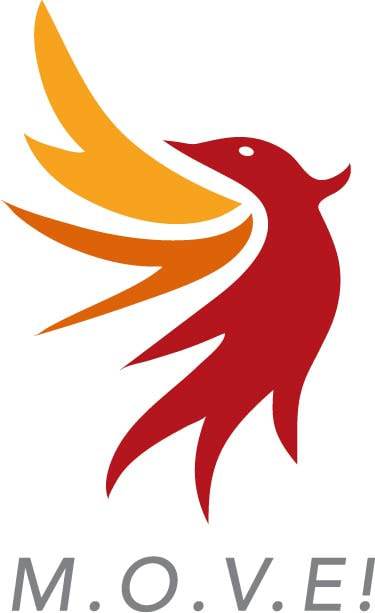How have you used M.O.V.E.!?
Dega: I’ve used both the M.O.V.E.! goal pyramid and the M.O.V.E.! buddy system with Boston College volleyball players. I used the pyramid to help them in the off-season set short-term goals to improve players’ conditioning.
Here's an example. One player, a middle blocker, wanted to get in better shape. So she used the pyramid to improve her conditioning because it shows all the components of fitness in one place.
The pyramid showed her strength, cardiovascular, fueling and hydrating, and recovery goals in one place where she saw it every day. She wanted to improve her vertical jump so she set a weight training goal of improving the weight she could squat with. She also set a cardiovascular goal of biking three a week for 20 to 30 minutes. She also set a nutritional goal to eliminate sugar and to drink more water. She wanted to increase her hours of sleep and set a goal of going to bed before 11:30 p.m. All those goals were included in the pyramid.
What happened?
Dega: At the end of her spring season, her vertical jump – her main goal – improved by four inches over her previous best. That's a lot -- more than she would have achieved otherwise. Also, my player also reached her goals faster than she thought she would.
We also liked the fact that the pyramid is flexible. You can write different tasks in different stripes. You can change it. It's also easy to track progress and it makes players accountable.
I used the buddy system to help the players achieve their fitness goals. Teams are important, but buddy systems add more focus and support to players' goals -- particularly since Division I sports involve pressures of both academic and athletic performance. On my team, players met with a buddy once a week for lunch, dinner, or coffee to share how they were progressing with their challenges. The players felt more supported with the buddy system than they did without that structure. They liked it because they felt another team member was following them and really cared about their efforts on a weekly basis.
What is your next goal?
Dega: After coaching women volleyball players for 30 years at the international, professional, and Division 1 college level, I want to keep empowering women in the sport, applying everything I've learned over the decades. A head coaching position at a college is something I would enjoy next.
Dega: I’ve used both the M.O.V.E.! goal pyramid and the M.O.V.E.! buddy system with Boston College volleyball players. I used the pyramid to help them in the off-season set short-term goals to improve players’ conditioning.
Here's an example. One player, a middle blocker, wanted to get in better shape. So she used the pyramid to improve her conditioning because it shows all the components of fitness in one place.
The pyramid showed her strength, cardiovascular, fueling and hydrating, and recovery goals in one place where she saw it every day. She wanted to improve her vertical jump so she set a weight training goal of improving the weight she could squat with. She also set a cardiovascular goal of biking three a week for 20 to 30 minutes. She also set a nutritional goal to eliminate sugar and to drink more water. She wanted to increase her hours of sleep and set a goal of going to bed before 11:30 p.m. All those goals were included in the pyramid.
What happened?
Dega: At the end of her spring season, her vertical jump – her main goal – improved by four inches over her previous best. That's a lot -- more than she would have achieved otherwise. Also, my player also reached her goals faster than she thought she would.
We also liked the fact that the pyramid is flexible. You can write different tasks in different stripes. You can change it. It's also easy to track progress and it makes players accountable.
I used the buddy system to help the players achieve their fitness goals. Teams are important, but buddy systems add more focus and support to players' goals -- particularly since Division I sports involve pressures of both academic and athletic performance. On my team, players met with a buddy once a week for lunch, dinner, or coffee to share how they were progressing with their challenges. The players felt more supported with the buddy system than they did without that structure. They liked it because they felt another team member was following them and really cared about their efforts on a weekly basis.
What is your next goal?
Dega: After coaching women volleyball players for 30 years at the international, professional, and Division 1 college level, I want to keep empowering women in the sport, applying everything I've learned over the decades. A head coaching position at a college is something I would enjoy next.
